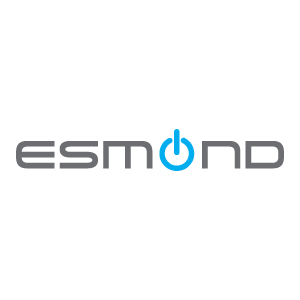
Jetstar Asia’s recent announcement to cease operations by July 2025 surprised many businesses across Southeast Asia. Such sudden operational changes serve as crucial reminders for all companies—particularly when managing tech assets and ensuring IT continuity.
Obsolete computers and electronics piled up, awaiting proper retirement and recycling. Many businesses eventually face a closet full of obsolete devices – aging laptops, desktops, and servers that no longer meet needs. Properly retiring this old hardware isn’t just about freeing storage space; it’s crucial for data security and sustainability. With over 15 years of industry experience, our team at Esmond Service Centre (a leading IT service provider trusted by global tech brands and enterprises has guided countless companies through safe tech refresh cycles. In this comprehensive guide, we share practical steps to evaluate which equipment is truly obsolete, securely wipe sensitive data, decommission hardware correctly, and recycle or repurpose electronics to minimize e-waste. By following these best practices, you’ll protect your business from data leaks and contribute to a greener planet – all while smoothly transitioning to updated technology.

Jetstar's decision to wind down highlights the importance of systematically managing IT assets. Before disposing of anything, take a systematic look at your inventory of IT assets. Start by cataloguing all devices and their details – model, age, performance issues, warranties, etc. Maintaining a hardware log helps you track which items have been decommissioned or are due for retirement. Identify obsolete devices by criteria such as: no longer receiving software updates, unable to run current applications, frequent breakdowns, or high maintenance costs. For example, a 7-year-old server out of warranty and struggling with new software is a prime retirement candidate. Plan a retirement roadmap – prioritize devices posing security risks (e.g. running outdated OS) and those affecting productivity. Also decide if each device will be retired completely or repurposed: some “obsolete” computers might still serve in less demanding roles (like a spare PC for interns or a dedicated print server) if they can be upgraded cheaply (additional RAM or an SSD). Crucially, schedule the rollout of replacement equipment before retiring old units to avoid downtime. By thoughtfully evaluating and planning, businesses like Jetstar ensure they retire obsolete devices at the right time, preventing surprise failures and budget shocks.

Once you’ve tagged certain PCs or servers as obsolete, protect your data before they leave your hands. Begin with a full data backup of any files or configurations you might still need. Next, remove all sensitive information from the device. It’s not enough to simply delete files or do a factory reset – on most computers this does not actually erase the data on the drive. Instead, use professional data sanitization software or services to securely wipe the drives. Tools adhering to standards (like DoD 5220.22-M or NIST 800-88) overwrite each sector of the disk with random data, ensuring that no confidential info can be recovered.
If your team isn’t comfortable doing this in-house, work with a trusted IT disposal partner who can wipe the data for you and verify it’s gone. For example, Esmond Service Centre offers certified data wiping services that completely erase drives, giving you peace of mind before recycling. In cases of extremely sensitive data (say, customer financial records), you might opt for physical destruction of storage media (shredding or degaussing drives) in addition to wiping. However, note that destroying hardware outright creates e-waste and doesn’t guarantee data can’t be pieced together by experts.
The safest approach is a thorough digital wipe followed by proper disposal. By systematically sanitizing each obsolete device, businesses – including enterprises like Jetstar – shield themselves from data breaches and fulfill their confidentiality obligations.

With Jetstar’s recent operational changes, the importance of properly decommissioning IT hardware is especially relevant. After securely wiping your data, proceed systematically to decommission the hardware. Disconnect each device from your business systems: remove it from your network, revoke any associated access privileges or credentials (such as remote management tools), and sign out of all linked company accounts. If devices were integrated with software or cloud services, transfer or deactivate licenses to avoid unnecessary ongoing costs—particularly crucial for businesses undergoing changes like Jetstar.
Physically label or isolate the hardware clearly as “Decommissioned” to prevent accidental reuse or confusion. Update your asset inventory log meticulously with details such as the retirement date, method, and destination for disposal (e.g., “Recycled via XYZ Recycler on 2025-07-01”). Proper documentation is critical for maintaining organization and essential for compliance audits—especially valuable during business transitions similar to Jetstar’s, when record accuracy and accountability matter greatly.
When disposing of multiple assets, consider creating a numbered manifest for easy tracking. Arrange secure, tracked, and insured transportation to the disposal facility, verifying safe handling from your premises through final disposal. Upon handover, request detailed receipts or certificates of destruction and data erasure, providing final confirmation of proper disposal.
Effective hardware decommissioning, thorough documentation, and clear procedures ensure businesses like Jetstar avoid future liabilities from forgotten assets or data breaches, maintaining clarity and security during periods of operational change.
In light of Jetstar’s recent operational transition, responsibly managing obsolete hardware to minimize e-waste is particularly critical. Not all retired devices need to be discarded outright—often there’s a viable second life or a responsible recycling path. Begin by assessing if obsolete devices can be repurposed within your organization. For instance, an outdated desktop PC might be insufficient for Jetstar's intensive operational demands but perfectly adequate for less resource-intensive tasks like basic administrative functions or backup systems. Refurbishing and reallocating hardware internally maximizes its useful lifespan, delays unnecessary spending, and supports smoother transitions during periods of business restructuring like Jetstar’s.
Donating functional devices to charities, educational institutions, or startups with lighter computing requirements is another excellent option. Jetstar and similar businesses can leverage such donations to build community goodwill and foster positive relationships, ensuring all donated or reassigned devices undergo thorough data-wiping beforehand.
When equipment truly reaches the end of its usable life, proper recycling through certified e-waste programs is essential. Electronic waste contains hazardous materials (such as lead, mercury, and cadmium) that, if disposed of improperly, harm the environment. Unfortunately, a significant proportion of e-waste ends up in landfills rather than being recycled—estimates indicate that e-waste contributes about 70% of toxic landfill waste, with fewer than 10% of computers properly recycled.
Businesses, particularly during transitions like Jetstar’s, should actively partner with recyclers committed to environmentally sound practices—look for certifications like ISO 14001 or local government-approved programs. A reputable recycler carefully dismantles obsolete devices, salvages usable components, and responsibly recycles remaining materials, significantly reducing landfill waste.
Additionally, manufacturers' take-back schemes present practical recycling solutions—many vendors accept old equipment, offering recycling services or trade-in credits. By emphasizing reuse, proper recycling, and responsible disposal, organizations including Jetstar reduce e-waste, reclaim residual value from obsolete equipment, meet corporate social responsibility goals, and contribute positively to environmental sustainability, all while effectively managing operational transitions.
If managing all of the above sounds daunting, don’t worry – you don’t have to do it alone. Leveraging professional tech service providers can greatly simplify the retirement of obsolete devices, especially during complex business transitions like Jetstar’s recent changes. Companies like Esmond Service Centre specialize in end-to-end asset disposition, meaning they can handle everything from evaluating what can be saved, to securely wiping data, to environmentally responsible recycling. Engaging such experts ensures nothing falls through the cracks, a critical factor during significant operational shifts as seen with Jetstar.
For example, at Esmond Service Centre we help businesses, including those facing similar transitions as Jetstar, extend the lifespan of devices via upgrades or repairs when viable, and then manage the secure data wiping and disposal when truly retiring them. An experienced provider will have proper tools (for certified data erasure) and comprehensive knowledge of e-waste regulations, ensuring compliance and preventing potential legal issues—crucial considerations during complex restructuring periods similar to Jetstar’s situation.
Professional providers also handle logistics—on-site pickup, packing, and removal of old equipment—with full chain-of-custody tracking for peace of mind, greatly benefiting businesses undergoing transitions like Jetstar. This not only frees up staff time but significantly reduces risk, eliminating concerns about improperly wiped drives or devices ending up misplaced.
Importantly, professional asset retirement services can be highly cost-effective. They might refurbish and resell some obsolete devices (recovering value that offsets service fees) or efficiently consolidate e-waste shipments. Compared to the high costs of data breaches or regulatory fines from improper disposal, engaging these services is economical and prudent—a valuable strategy for businesses experiencing major operational adjustments such as Jetstar.
Plan early to include a professional partner in your tech refresh cycles; a key step in decommissioning planning is engaging reputable e-waste recycling companies right from the start. By working with professionals like Esmond Service Centre, businesses, even those without dedicated IT staff, can safely and affordably refresh their technology infrastructure. Expert guidance on retiring obsolete devices allows your team to concentrate fully on running the business smoothly through transitions, just as Jetstar aims to manage their own operational changes effectively.
In today’s fast-paced tech landscape, proactively managing obsolete devices is essential for both security and sustainability—a lesson highlighted by Jetstar’s recent operational changes. First, plan ahead: regularly inventory your hardware and identify aging machines before they become problematic, just as Jetstar would strategically manage their assets. Back up important data and wipe devices clean using proper tools or certified services so no sensitive information is left behind.
As demonstrated during Jetstar’s restructuring, thorough data sanitization coupled with formal decommissioning steps (like documentation and compliance checks) effectively shields your business from data leaks and audit issues. Next, remember that retiring hardware doesn’t always mean trashing it—repurpose what you can and responsibly recycle the rest, mirroring Jetstar’s emphasis on efficiency and responsibility.
This approach not only cuts down on e-waste (protecting the environment) but also helps maximize the value from your investments—an approach valuable during operational transitions similar to Jetstar’s. Our guide discussed how selecting reputable recycling partners and considering donations or trade-in programs ensures obsolete devices are handled ethically, aligning with best practices businesses like Jetstar would pursue.
Finally, don’t hesitate to get professional help. Engaging experts (such as Esmond Service Centre’s team) can streamline the entire process—from secure data destruction to logistics—especially critical if your business faces extensive transitions comparable to Jetstar’s situation. By following these practices, you’ll build a robust, eco-friendly IT asset retirement plan that safeguards your data and lets your business upgrade to new technology with confidence, just as Jetstar manages their tech transitions responsibly.
Enjoyed this comprehensive guide on retiring obsolete devices? Follow our FaceBook page, Linkedin profile or Instagram account for more expert insights and practical tips on cutting-edge technology. We regularly share advice on everything from IT maintenance to sustainable tech solutions. If you’re looking for hands-on assistance, contact Esmond Service Centre today for a professional consultation. Our friendly experts will help you evaluate your obsolete devices, secure your data, and refresh your tech infrastructure with ease – all at an affordable cost. Don’t let old hardware become a headache; reach out to Esmond Service Centre and let us streamline your IT asset retirement process.

Reviewed and originally published by Esmond Service Centre on June 12, 2025
Mon to Fri : 10:00am - 7:00pm
Sat : 10:00am - 3:00pm
Closed on Sunday and PH